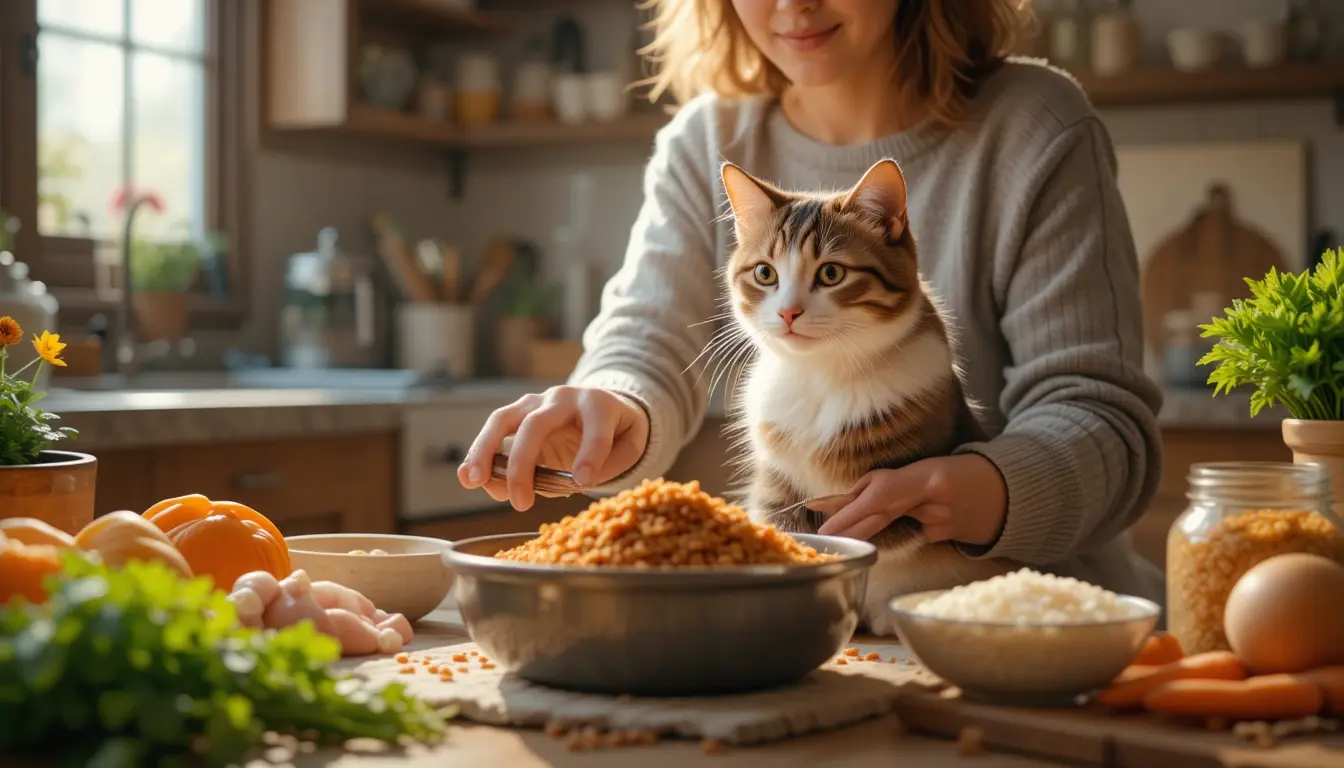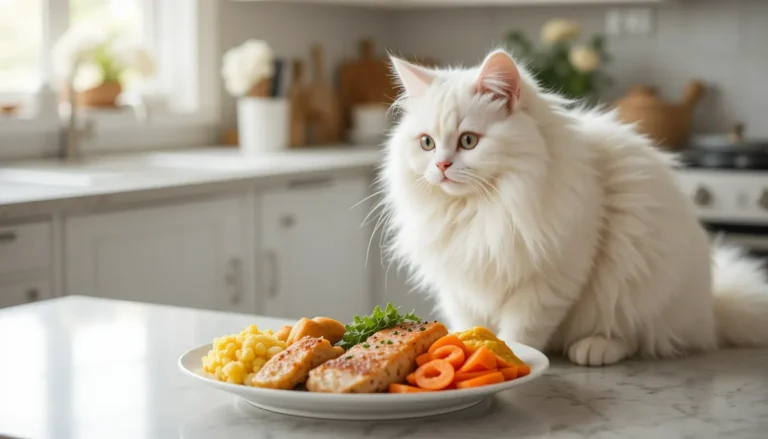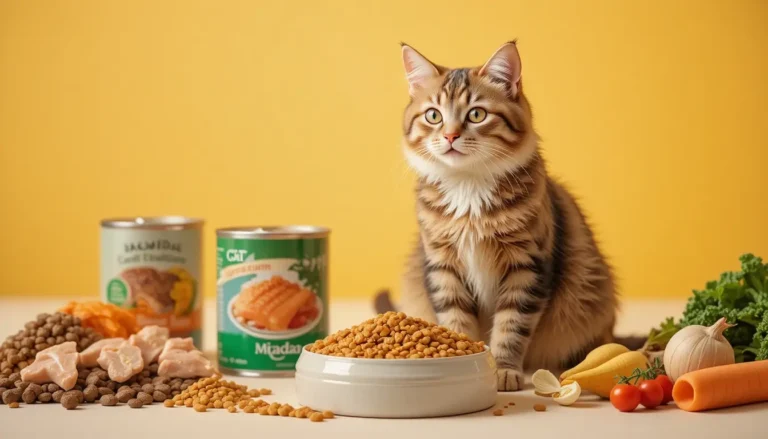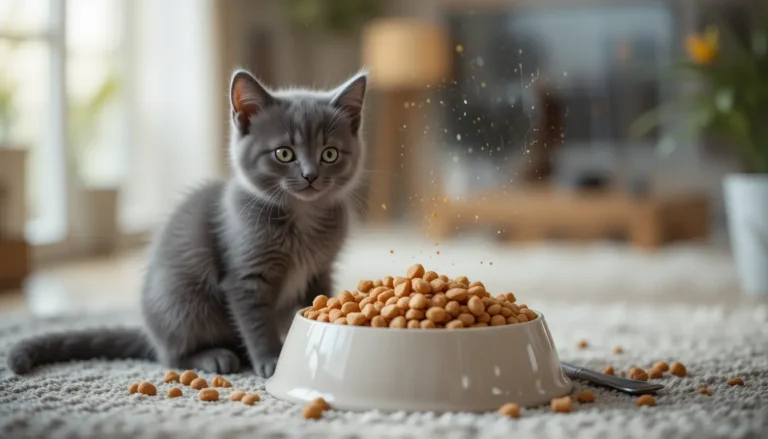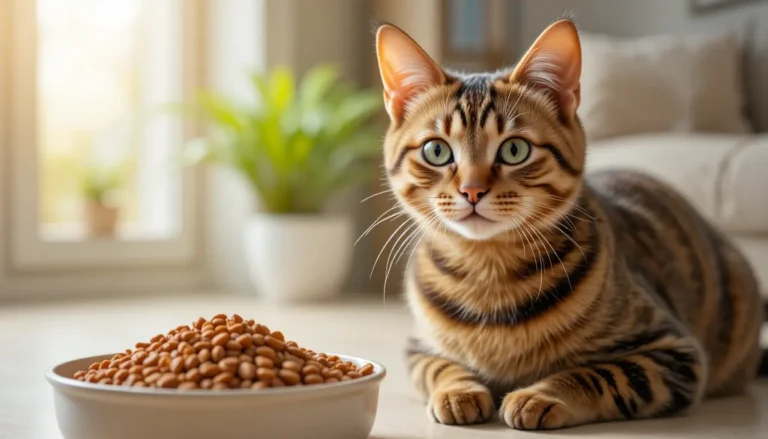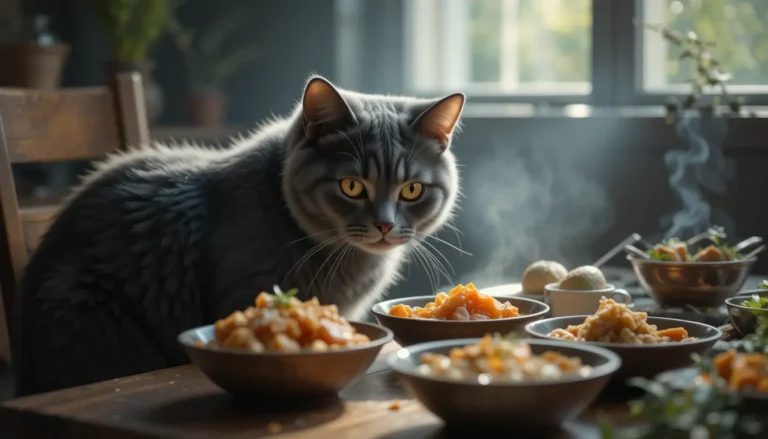How to Make Cat Food
Have you ever wondered how to make cat food that’s truly healthy, safe, and tailored to your feline friend’s nutritional needs? If you’re living in Dubai or KSA, access to premium commercial diets can be limited or expensive. That’s why more cat parents are exploring homemade cat food as a fresh, cost-effective alternative. But making it right means more than mixing chicken and rice it’s about achieving balanced nutrition and meeting your cat’s species-appropriate dietary needs.
With expert insights from veterinary nutritionists, brands like Balance, and resources like Cats.com, this guide will walk you through the essentials from ingredients to feeding tools and safety standards.
How to Make Healthy Cat Food at Home (Backed by Science)
Creating healthy cat food at home starts with a base of high-quality animal proteins such as turkey breast, rabbit meat, or chicken hearts and livers. These ingredients offer essential amino acids like taurine, and minerals like calcium, phosphorus, and copper critical for a complete and balanced diet.
Experts like Dr. Sean Delaney, founder of Balance.it, recommend following AAFCO standards or FEDIAF nutrient profiles to ensure proper nutrient distribution. Supplements like fish oil (EFA), vitamin B complex, and kelp help meet trace nutritional needs. For added convenience, products like EZComplete Fur Cats and Alnutrin offer whole food premixes that simplify your recipe while ensuring safety and precision.
Tip: Use a cat food bowl with the right depth to avoid whisker fatigue and help your cat enjoy mealtimes without stress.
How to Make Your Own Cat Food (Safely & Effectively)
- Choose your protein: Use human-grade ingredients like chicken, lamb, or venison.
- Add organ meats: Include chicken liver powder or beef liver powder for vitamin A and iron.
- Balance minerals: Use calcium lactate or crushed eggshells to meet bone-in recipe requirements.
- Avoid carbohydrates: Skip grains and fillers like corn, potatoes, and rice cats do not metabolize carbs well.
- Add supplements: Include taurine, iodized salt, omega-3, and gelatin to support feline health.
According to JoAnna Pendergrass, DVM, and Kate Barrington, getting the nutritional balance right is essential to avoid nutrient deficiencies, which can lead to diabetes, obesity, kidney disease, and inflammatory bowel disease.
How to Make Fish Food at Home for Cat Fish Lovers
If your cat enjoys fish, a homemade meal featuring white fish, salmon, or sardines can be a delicious protein source. Just ensure you’re including omega-3 and not relying on fish alone. Avoid bones, and use fish as a supplement, not the main staple long-term feeding can cause nutrient imbalances.
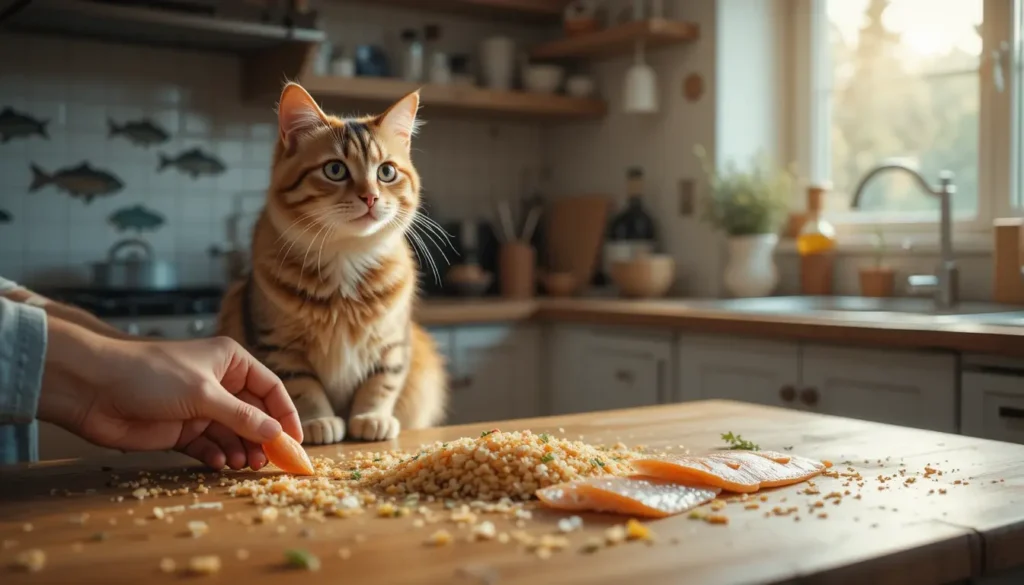
How to Make a Cat Food Dispenser (Easy DIY Ideas)
Want to create an interactive feeding system? Here’s how to make a cat food dispenser that supports both mental stimulation and portion control:
- Use a clean plastic bottle or PVC pipe to craft a basic cat food dispenser easy.
- Cut holes large enough for kibble to fall through when your cat paws at it.
- Add complexity by turning it into an intelligence toy a technique recommended by The Little Carnivore founder Coline Doebelin.
An automatic feeder or food puzzle can reduce overeating, prevent obesity, and simulate your cat’s wild feeding behaviors.
How Much Food Should I Feed My Cat Per Day?
Whether you’re serving raw cat food or a gently cooked recipe, understanding portion control is essential:
- 165 to 215g per day for a 2–3kg cat
- 265 to 310g per day for a 4–5kg cat
- For dry food: 20 to 80g daily, depending on brand (e.g., Purizon Adult Fish)
- Caloric distribution: 60–80 kcal per kg of body weight
Always consult a veterinary nutritionist or use tools like Balance.it to create custom pet food plans.
Food Storage: Freezing, Portioning & Safety Tips
- Freeze in ice cube trays for single servings
- Thaw using a water bath (avoid the microwave for regular use)
- Don’t leave food at room temperature for more than 30–60 minutes (especially in Dubai or KSA)
- Store extra portions in a 24oz pouch, 5lb pouch, or airtight container
- Use a trial size 4.8oz pack when introducing a new recipe or supplement
Avoid Common Mistakes with Homemade Cat Food
- Don’t feed a raw or cooked meat diet without a meal completer
- Don’t assume your recipe is balanced without nutrient analysis
- Never skip organ meats, supplements for cats, or the right caloric distribution
- Avoid grains, preservatives, and artificial additives
- Consult with professionals like Marta Kaspar of Alternative Nutrition, LLC or use the Know Better for Cats premix for added peace of mind
Conclusion: How to Make Cat Food That’s Truly Complete
Learning how to make cat food gives you full control over your feline’s health, ingredient quality, and feeding style. Whether you’re caring for kittens, senior cats, or a nursing cat, homemade meals when done right can provide a complete and balanced diet free from fillers and commercial preservatives.
Use science backed tools like Balance.it, follow AAFCO or FEDIAF guidelines, and never compromise on your cat’s nutritional needs. For pet parents in Dubai and KSA, this approach offers flexibility, freshness, and control.
Ready to try it? Visit Tayyibcats for more resources on feline nutrition and discover our full range of articles, including choosing the right cat food bowl for whisker-friendly mealtimes.
FAQs
Are homemade cat food safe?
Homemade cat food can be safe if it’s nutritionally balanced and meets AAFCO or FEDIAF standards. Always consult a veterinary nutritionist or use a meal completer like Balance.it or Alnutrin.
Can cats eat raw chicken?
Cats can eat raw chicken as part of a species-appropriate raw diet, but it must be handled carefully to avoid bacterial contamination. Ensure it’s part of a complete and balanced plan, not just meat alone.
Is tuna good for cats?
Tuna can be a tasty occasional treat but lacks essential nutrients for a complete diet. Overfeeding may lead to mercury toxicity or nutrient deficiencies.
Can cats live on homemade food?
Yes, cats can live on homemade food if it’s properly balanced with essential nutrients, organ meats, and the right caloric distribution. Poorly planned diets may cause long-term complications.
Do vets recommend homemade cat food?
Many veterinarians support homemade cat food when guided by a board certified veterinary nutritionist. Experts like Dr. Sean Delaney stress the importance of nutritional balance and supplements.

